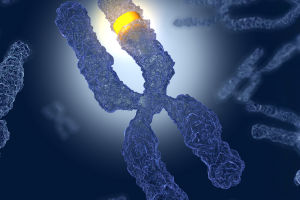Gaucher Disease Alerts!
Gaucher disease (GD) is a rare, inherited lysosomal storage disorder caused by a deficiency of the enzyme glucocerebrosidase (also known as acid β-glucosidase).
This enzyme deficiency leads to the accumulation of glucocerebroside, a type of sphingolipid, primarily within macrophages of the monocyte-macrophage system.
These engorged macrophages, termed Gaucher cells, exhibit a characteristic “crumpled tissue-paper” appearance under the microscope.
The lipid buildup occurs mainly in the bones marrow, liver, spleen, lungs, and sometimes the brain, resulting in a spectrum of clinical manifestations. The accumulation disrupts normal function, causing symptoms such as hepatosplenomegaly, anemia, thrombocytopenia, bones pain, and fractures.
Neurological involvement is seen in certain subtypes, where toxic metabolites like glucosylsphingosine may accumulate in the brain, triggering neuroinflammation and progressive neurodegeneration.
Gaucher disease is classified into three major types based on neurological involvement and disease progression:
Type 1 (Non-neuronopathic): The most common form, characterized by visceral and skeletal symptoms without central nervous system involvement.
Type 2 (Acute neuronopathic): A rapidly progressive form presenting in infancy with severe neurological deterioration and a poor prognosis.
Type 3 (Chronic neuronopathic): A more slowly progressive neurological disease with variable severity and systemic manifestations.
Clinical Manifestations and Disease Impact
Patients with type 1 GD often present with painless of the spleen and liver, fatigue from anemia, easy bruising due to thrombocytopenia, and bones complications including pain and pathological fractures. Bones involvement is particularly debilitating, linked to both physical infiltration by Gaucher cells and inflammatory cytokines secreted by these cells, which contribute to bones resorption and infarcts.
Type 2 and 3 forms involve neurological symptoms ranging from developmental delays to seizures and myoclonic epilepsy, with type 2 being uniformly fatal in early childhood. The phenotypic variability within types, especially type 3, complicates prognosis and treatment decisions.
Advances in Treatment: Enzyme Replacement and Beyond
Enzyme replacement therapy (ERT) has transformed the management of Gaucher disease, particularly type 1 and some type 3 patients. Recombinant glucocerebrosidase infusions reduce glucocerebroside accumulation, improving anemia, thrombocytopenia, organomegaly, and bones symptoms. However, neurological manifestations respond poorly to ERT due to the enzyme’s limited ability to cross the blood-brain barrier.
Substrate reduction therapy (SRT), using agents such as eliglustat, inhibits glucosylceramide synthase, decreasing the synthesis of the accumulating lipid. SRT offers a convenient alternative or adjunct to ERT for eligible adult patients with type 1 GD, demonstrating comparable efficacy in reducing disease burden.
Emerging therapies under investigation include pharmacological chaperones that stabilize defective enzyme proteins and gene therapy approaches aiming to correct the underlying genetic defect. These novel treatments hold promise for more comprehensive disease control, including neurological symptoms.
Expert Insights and Future Directions
Dr. Gregory Pastores, a leading expert in lysosomal storage disorders at the Mount Sinai Health System, notes, "The landscape of Gaucher disease treatment is rapidly evolving. While enzyme replacement remains the cornerstone, advances in substrate reduction and gene therapy are opening new horizons, particularly for patients with neuronopathic forms."
Early diagnosis and initiation of treatment are critical to prevent irreversible damage and improve quality of life. Genetic testing and enzyme activity assays facilitate prompt identification, while ongoing monitoring of hematologic, visceral, and skeletal parameters guides therapeutic adjustments.
Gaucher disease exemplifies the complexity of lysosomal storage disorders, with its diverse clinical spectrum rooted in a fundamental enzymatic defect. Modern treatments, including enzyme replacement and substrate reduction therapies, have markedly improved outcomes for many patients.
Nevertheless, challenges remain, especially in addressing neurological involvement. Continued research into innovative therapies and personalized medicine approaches is essential to fully address the multifaceted nature of Gaucher disease and enhance patient prognosis.
-
 Prader-Willi Syndrome!Prader-Willi Syndrome?! A Multisystem Genetic Puzzle—How Does It Really Affect The Whole Body?!
Prader-Willi Syndrome!Prader-Willi Syndrome?! A Multisystem Genetic Puzzle—How Does It Really Affect The Whole Body?! -
 Glomerulonephritis Alerts!Glomerulonephritis? What Triggers This Silent Kidney Saboteur And Can It Be Reversed In Time?!
Glomerulonephritis Alerts!Glomerulonephritis? What Triggers This Silent Kidney Saboteur And Can It Be Reversed In Time?! -
 Aneurysm Risk Factors!Could A Silent Risk Be Lurking In Your Brain Or Chest? These Clues Might Save You!
Aneurysm Risk Factors!Could A Silent Risk Be Lurking In Your Brain Or Chest? These Clues Might Save You!
Copyright © zogu 2021 - 2025. All Right Reserved.